Click here and press the right key for the next slide (or swipe left)
also ...
Press the left key to go backwards (or swipe right)
Press n to toggle whether notes are shown (or add '?notes' to the url before the #)
Press m or double tap to slide thumbnails (menu)
Press ? at any time to show the keyboard shortcuts
What Is Joint Action? Bratman’s Account
What distingiushes joint action from parallel but merely individual action?






shared intention
‘I take a collective action to involve a collective [shared] intention.’
(Gilbert 2006, p. 5)
‘The sine qua non of collaborative action is a joint goal [shared intention] and a joint commitment’
(Tomasello 2008, p. 181)
‘the key property of joint action lies in its internal component [...] in the participants’ having a “collective” or “shared” intention.’
(Alonso 2009, pp. 444-5)
‘Shared intentionality is the foundation upon which joint action is built.’
(Carpenter 2009, p. 381)
?
shared intention
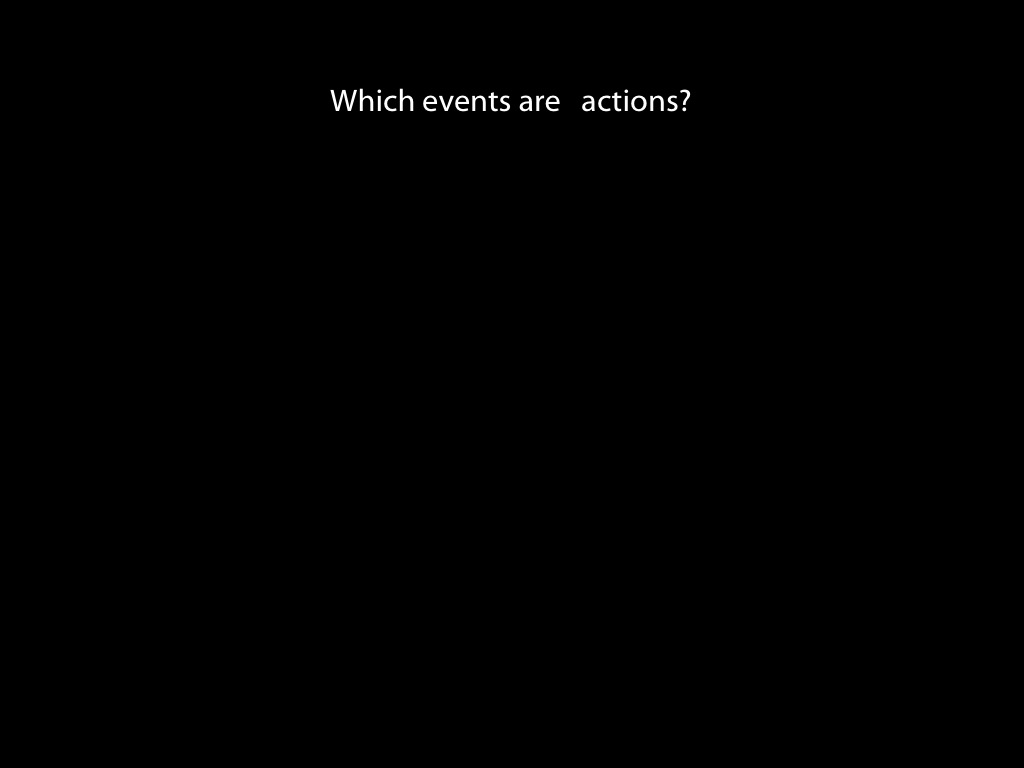
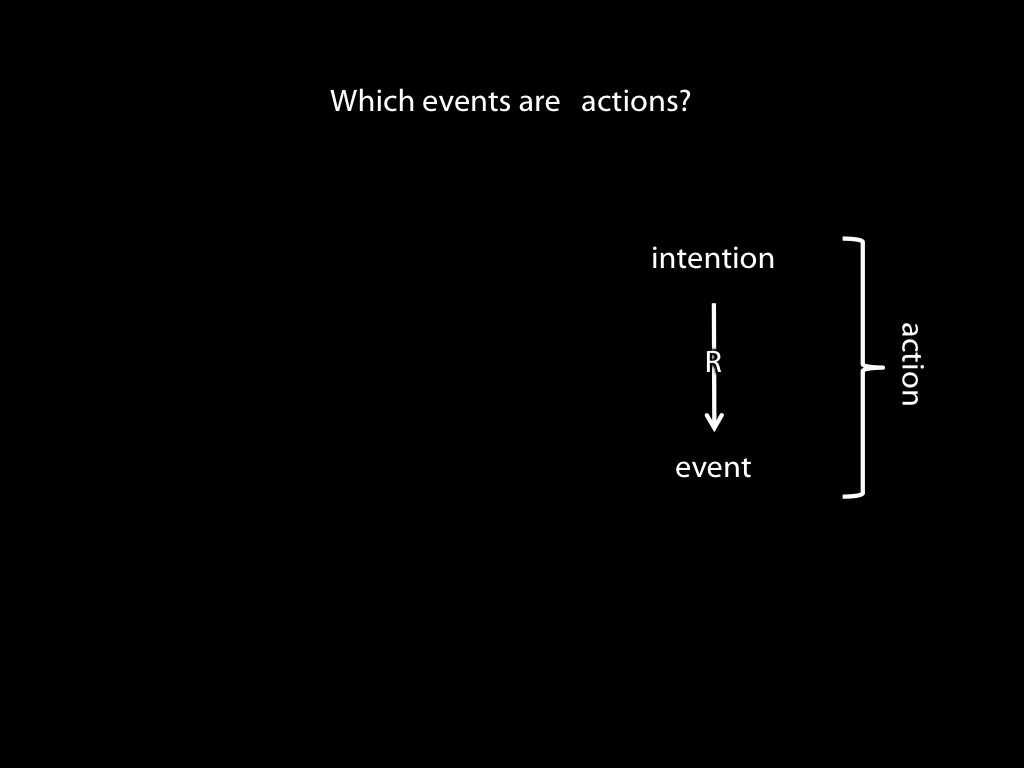
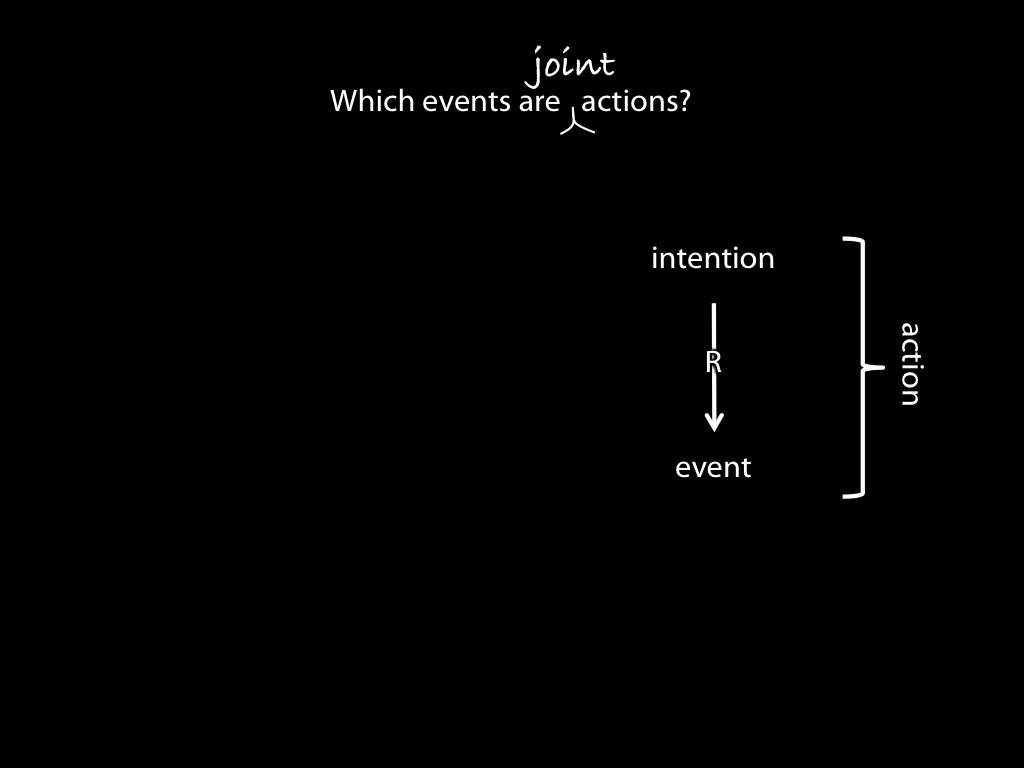
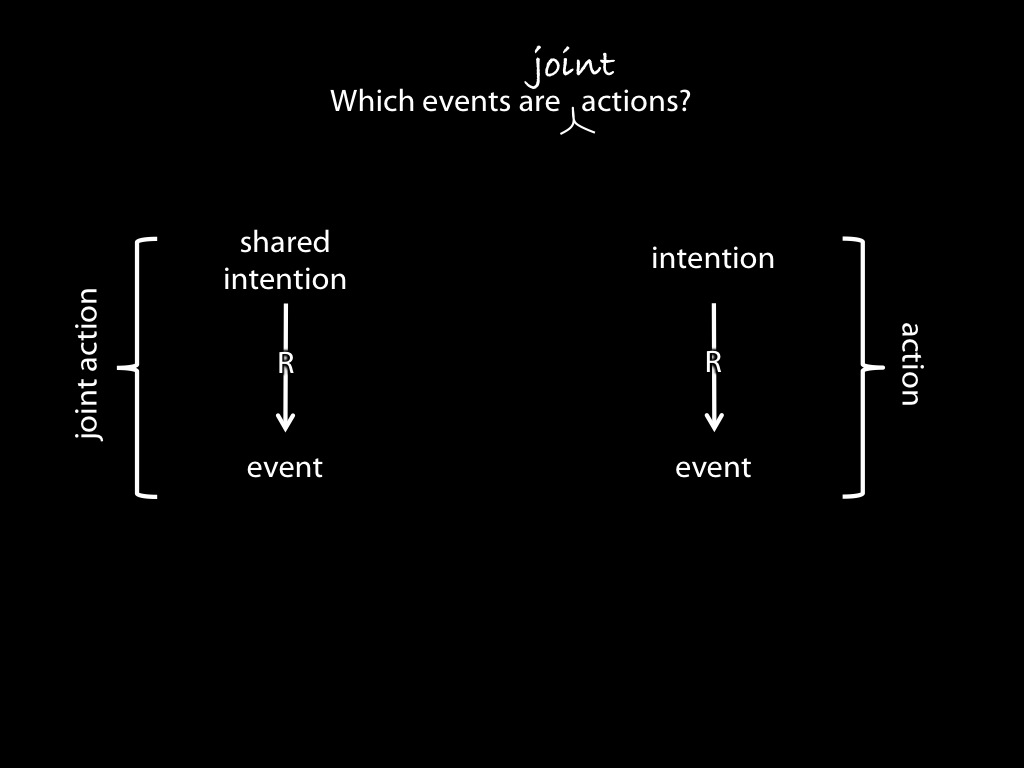
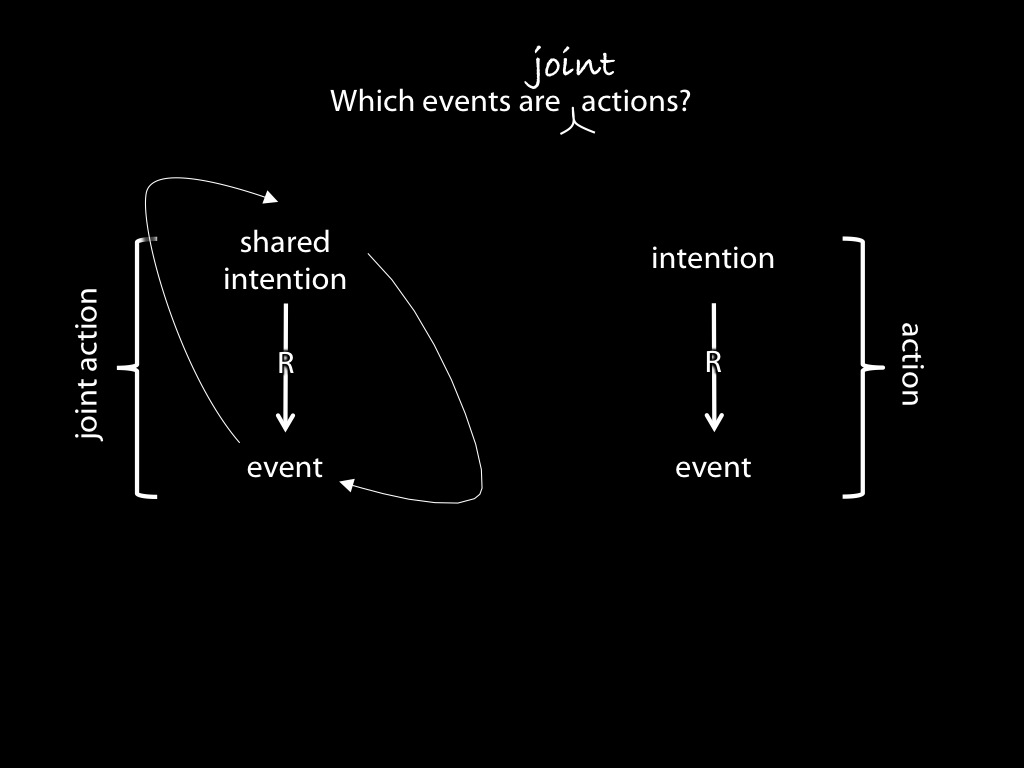
Carpenter(2009, p. 281)
What is shared intention?
Functional characterisation:
shared intention serves to (a) coordinate activities, (b) coordinate planning and (c) structure bargaining
Constraint:
Inferential integration... and normative integration (e.g. agglomeration)
Substantial account:
We have a shared intention that we J if
‘1. (a) I intend that we J and (b) you intend that we J
‘2. I intend that we J in accordance with and because of la, lb, and meshing subplans of la and lb; you intend [likewise] …
‘3. 1 and 2 are common knowledge between us’
(Bratman 1993: View 4)
